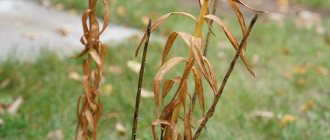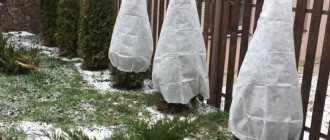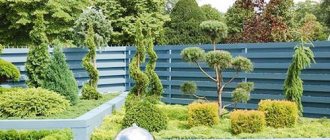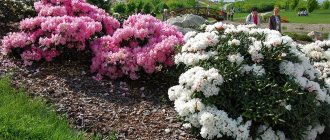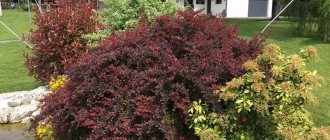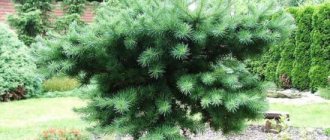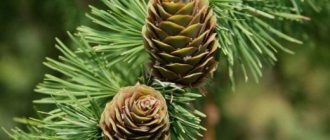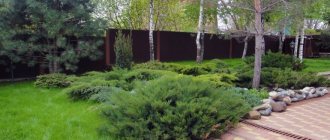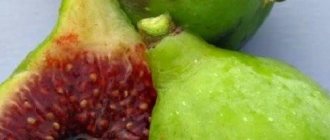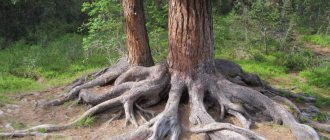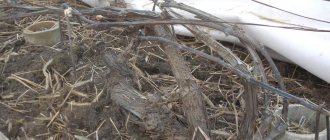Coniferous plants They delight us with rich shades of green all year round. But you need to remember that for the first time after planting they need shading from the winter sun.
The first two years are especially critical, when the plant has not yet fully adapted to its new location. During this period, shading is a mandatory recommendation.
When and what coniferous plants need to be covered?
Be sure to cover coniferous plants in the first two years after transplantation. Some sensitive species of Thuja and Juniper need shelter longer - up to four years. In an unusually frosty and sunny winter, even large trees that grow for 10 years without shelter suffer. Therefore, be guided by weather conditions and, if necessary, shade adult conifers.
In central Russia, the sunny period begins in mid-late January; by this time, securely cover the needles. Some gardeners cover plants in late autumn in preparation for winter. At the Yuzhny nursery, specialists shade thujas and junipers, exotic pines and spruces: Spruce conika , Spruce nidiformis , Weymouth pine , Mountain pine , Black pine ...
How to check the winter hardiness of conifers?
You can reduce the likelihood of winter troubles to zero already at the stage of purchasing seedlings. If you purchase thujas, spruces, and junipers from domestic nurseries, where they grew for several years in the same climatic conditions as in your area, then problems with winter hardiness will disappear. Weak crops freeze out already in the first year after planting in the nursery, so they simply do not reach the shelves.
But more often we purchase planting material at the market, where it is impossible to check whether the seller provided accurate information about the growing conditions of the seedlings. And even if all the plants were grown in the local climate, there is no guarantee that they were not overfed with nitrogen fertilizers to accelerate growth. And excess nitrogen significantly reduces the immunity of crops and leads to freezing.
Read how to grow spruce here:
Therefore, the owners themselves must take care of the conifers, preparing them for hibernation at the end of autumn.
In small areas, different types of dwarf pine coexist perfectly, which stands out for its winter hardiness and ability to withstand snow loads
Among the crops that are more damaged than others in winter, the leaders are arborvitae, firs (except Siberian and Wicha), metasequoias, cypresses and cypress trees. In areas with a harsh climate, it is better not to plant these crops or be prepared for the fact that they will have to be protected from frost every winter.
The list of the most unpretentious coniferous plants includes:
- Spruce (except Eastern and Brewer);
- Cedars;
- Larch (except Western);
- Pines (except Thunberg);
- Junipers (except Turkestan and Zeravshan);
- Hemlock;
- Western thuja.
The remaining varieties need to be selected taking into account the duration and severity of your winters.
An overview of the best varieties of ornamental shrubs for arranging a garden here: https://diz-cafe.com/ozelenenie/dekorativnye-kustarniki-dlya-sada.html
What and how to cover coniferous plants in winter?
In the pre-winter time, prepare coniferous trees and shrubs. To avoid breaks from the snow pile, the branches of vertically growing junipers and thujas are carefully tied together. An ordinary twine is suitable for this.
Kraft paper, burlap, and non-woven materials such as agrospan, lutrasil, and spunbond can be used as covering materials. At home, you can even use newspaper and wrapping paper for shading. The only condition is that the material must “breathe”, so films and plastic are unsuitable.
The snow around the plant is trampled or cleared. Now wrap the material around it, completely covering the needles. Fasten the seams with a stapler, leave a gap at the top for breathing (on the shady side, so that the sun's rays do not fall on the needles). There is also a frame method of shelter - a frame is installed around the plant and covered with a cap made of agrospan. The shelter and cap are secured with pegs. You can see the types of frame shelters on our website.
In some frosty and sunny winters, adult, long-planted plants can be shaded with a fine mesh on the sunny side.
How to cover medium-sized conifers
Almost all types of pines and spruces are covered only in the first year of life, and thujas, some types of fir, cypress, cedar and yew need protection every winter. What do we have to do:
- Carefully bend the legs to the trunk and secure them in this position with twine. Do not pull it too tightly so as not to damage the perennial.
- Place a special agro-cap on the plant. You can purchase it in gardening stores or make it yourself - simply wrap the crop with agrotextiles and secure the edges with a stapler.
If the branches of an ephedra are very fragile, do not take risks with fixing them, but rather build a frame made of wood or plastic around the plant and cover it with any material:
- lutrasil;
- agrospan;
- burlap;
- spunbond.
Attention! You should not make a frame out of metal and cover it with film. Metal conducts cold well and can harm the plant even more, and the film traps air and moisture, causing the plants to damp out.
When is the cover removed?
Removing the cover requires great care and compliance with several conditions. Firstly, it is necessary that the ground thaws no less than the depth of a bayonet and the root system of the plant begins to work. This happens around the end of April.
Secondly, the cover is removed in cloudy weather so that sudden changes in illumination and direct rays do not cause shock to the needles. It is ideal if you have studied the weather forecast in advance and opened the plants ahead of a cloudy period of 4-7 days. Then your coniferous pets will be able to gradually adapt to the light regime and painlessly move from hibernation to growth.
Useful nursery links: Winter services for covering and planting coniferous plants Covering material Preparing the garden for cold weather
To the list
How to cover small thujas for the winter. How to cover thuja
Sheltering a thuja for the winter is a simple process, but a little painstaking, as it requires care. First, tie the tree branches with thick twine. Do not pull the twine too tight, otherwise it will be hard on the branches. It is enough to fix the crown so that snow cannot fall on the branches. Gather the branches up toward the center of the tree and then begin tying in a circle. Start the process at the base of the tree and gradually move to the top.
If your region experiences heavy snowfalls with the onset of winter, it makes sense to build a frame. You need to drive 3 pins made of metal or wood into the ground next to the crop. They should intersect at one point - above the top of the tree. Then wrap the frame with covering material that allows air to pass through. Be sure to strengthen the material to the frame so that it does not blow away in a gust of wind. Tie it with twine, for example.
Stores that offer a large selection of gardening tools sometimes have special covers for plants on sale. Buy them, they are easy to use and will serve you for decades. You just need to put the cover on and straighten it on the thuja, then the plant will stand wonderfully all winter, until the beginning of spring. In the spring, remove the cover, wash and dry it; you won’t need it until the fall.
Another method of shelter is to install a sun screen. This could be a wooden box or a homemade device. Drive the pegs parallel to each other into the ground. Cover the space between the pegs with roofing material or a special sun-protective fabric. Such a shelter will prevent the needles from burning out even in the spring, when the sun is very active.
To protect thuja in winter, use a few practical tips:
- annual and biennial trees are covered first, even before the snow falls;
- if a lot of snow has fallen during the winter, remove it from the shelter;
- the cover can be removed after the snow begins to melt.
It is more convenient to cover a tree with two or three people. Ask someone in your family to help you, and you can do it in just a few minutes.
Sheltering conifers for the winter
To cover a coniferous tree for the winter, you must first tie the branches loosely to the trunk with twine, preferably natural. Then they wrap it:
- burlap;
- spunbond;
- agrofibre;
- lutrasil;
- kraft paper.
The edges are secured with a stapler.
Shelter of conifers on a trunk
Plants on a trunk require special protection before the onset of cold weather. First thing:
- Protect the grafting site from frost and wind. Wrap this place with covering material and secure it well.
- They protect the crown, so it cannot support a heavy mass of snow and breaks off at the grafting site.
Scots pine care
Scots pine does not require special care, but it, like other conifers, can be damaged by diseases. Therefore, it is necessary to take a closer look at it from time to time. One of the most common diseases is rust, which can be eradicated by systematically collecting yellowed needles and treating the trunks with a zineb suspension. Also, pine can be attacked by aphids, scale insects and mites; karbofos will help against them. Pine branches are often infested by moths and silkworms. The only control measure against them is to remove branches infected with clutches.
Best-Woman.ru
Feeding conifers
A very important nutrient in spring is nitrogen. It stimulates growth and bud formation, including flower buds. Due to the fact that conifers “eat” less than other plants in our garden, it is very important not to overdo it with nutrients. To do this, we recommend using special fertilizers for coniferous plants. The brand can be whatever you like. The main thing is that there is a mark “for conifers” or “for evergreens”. If you forgot to purchase a specialized fertilizer, but there is a universal complex spring fertilizer or azofoska, then you can use them. Gently scatter a handful of fertilizer under the plant over an area no larger than the perimeter of the crown and loosen it. Coniferous plants also respond well to microelements and growth regulators, such as Epin, Zircon, Siliplant, Tsitovit, Domotsvet, Ferovit and others. They irrigate the crown several times a season, from spring to mid-summer.
If you use our completely simple recommendations, your evergreen friends will delight you with juicy and healthy needles, high-quality growth and exceptional decorativeness from year to year.
Additional care
Despite the winter hardiness and unpretentiousness of the crop, mineral fertilizing will not harm. Especially for freshly planted crops in the fall, so that they can take root before spring. The plant must become stronger and be resistant to disease. What to feed your pets ahead of the cold weather?
Let us describe several steps leading to successful acclimatization and overwintering:
- We water in the fall 50–60 cm deep, not only near the root, but also within the radius of the root system. In case of heavy autumn rains, the procedure is canceled;
- trunk mulching with organic matter (needles, pine bark, sawdust, spruce branches, hay, etc.) is poured in 1–2 layers, no thicker, so that rodents do not build a nest;
- feeding with vermicompost and compost will support the vitality of conifers, as well as adding magnesium with dolomite flour;
- nitrogen in large quantities and manure can harm plantings;
- In spring, at temperatures above +10 °C, it is recommended to treat with biostimulants: Epin, HB 101, Zircon. Sometimes it is enough to spray the crown with warm water and hide it from the sun.
It is much more advisable to take care of conifers than to restore them as a result of neglect.
Coniferous plants occupy a special place in the hearts of avid gardeners. Evergreen trees and shrubs are planted not only as an element of a garden composition, but also as an independent plant. The needles shade the area well and add coziness to the overall picture of the summer cottage. Even in the cold season, when all plants go into so-called hibernation, coniferous plantings are a kind of decoration, bringing to mind winter holidays in a warm family circle.
The main reasons for covering coniferous crops for the winter are considered to be frosty wind and scorching rays of the sun. These are the factors that have the most adverse effect on plants. The sun's rays are especially dangerous during the thaw period. At this time, the coniferous tree evaporates a large amount of moisture, which is not replenished in any way. It's all about the tree being in a state of rest and lack of sap flow. It is during this period that the rays of the sun not only completely dry the branches, but also leave severe burns on them. Frosty winds are no less harmful to conifers. That is why many summer residents plant their spruce, thuja and pine trees along the wall or surrounded by other plants. This to some extent protects the seedlings from the wind.
Preparing conifers for winter
Coniferous plants occupy a special place in our gardens: they create the basis of the composition, cover unwanted details and outbuildings, and in winter they maintain the shape of the entire garden. Many of them are able to change the color of their needles depending on the time of year, creating additional color accents. Even for the most unstable climate, you can choose conifers to beautifully decorate your site with them.
Most coniferous plants are quite unpretentious, but when growing exotic plants, you have to take some risks. Even local pines and spruce trees do not always withstand the vagaries of winter weather, not to mention overseas species. Everything is natural in nature. She gets rid of weak plants to make way for the development of stronger, better adapted specimens. Naturally, coniferous “foreigners” have a more difficult time. But they can also be helped.
In winter, when the flower beds are empty and covered with snow, only evergreen plants can give the area a picturesque look. Modern breeders have developed so many species and varieties of conifers, of different textures, sizes, and colors, that compositions can be created only from these plants; their decorative value will be high both in the summer and winter seasons. Not all conifers tolerate winter equally well; seedlings brought from Europe, a region where the climate is much milder than Eastern European and Siberian ones, can be damaged by severe frosts. There is a possibility of freezing of the roots and damage to the crown.
Nowadays, other conifers, which are not entirely familiar in our region, are increasingly appearing on private plots. These are thujas, Canadian spruces, cypresses, yews, and junipers. When purchasing coniferous plants, it is important to pay attention to the frost resistance of the variety. But, even if you made the right choice, the plant must be prepared for winter, especially in the first two to three years after planting.
Preparations for winter for coniferous plants need to begin in advance. From the beginning of August, fertilizing with nitrogen fertilizers is stopped in order to reduce the growth of young shoots, which will no longer have time to ripen by winter and, naturally, will freeze.
Pre-winter watering
If winters in your region are frosty, deciduous and coniferous trees and shrubs need to be well watered in late autumn. This will help them endure frosts more easily. Pre-winter watering is done after the trees have shed their leaves. Spread the soil 50 - 60 cm deep along the entire circumference of the crown (this is where the thin absorbent roots are located), and not just near the trunk. The thing is that wet soil does not freeze as much and cools less than dry soil. This is especially important if the winter is expected to be snowless, but with frost. Of course, in a rainy autumn there will be enough moisture without watering.
If you water trees correctly in late autumn, the trunk and crown will be saturated with moisture. I repeat, this is important for deciduous trees, for their spring sap flow, but especially for evergreens. In early spring, when the sun begins to get hot, the needles will actively evaporate moisture. But the ground is still frozen, the tree has nowhere to replenish its water supplies. And the needles simply dry out from the wind and sun. In the spring we often see whitish, thinned, lifeless needles, which then fall off.
The tree trunk circles must be mulched with organic matter; you can use sawdust, pine needles or spruce branches. This is especially important for young conifers planted this or last year. In early spring, the mulch should be removed so that the soil under the trees warms up faster.
Strengthening new plantings
Coniferous trees collect large amounts of snow on their branches. And if winter also pleases us with heavy snowfall, then a sticky snow mass may form on them. This weight is sometimes too heavy, especially for seedlings that have not had time to take root. Therefore, in order to avoid them falling and prevent the roots from breaking, it is better to secure the plants with guy wires.
Cypress trees, columnar junipers, some varieties of thuja and Canadian spruce must be protected from sunburn. To do this, cover the conifers for the winter with special material. For this purpose, the following are well suited: burlap, wall mesh, woven propylene panels.
Having chosen the appropriate material, it must be placed on the plant and tied with twine, without tightly tightening the branches. There is no need to “wall up” the entire crown down to the last branch. If there are “windows” left, that’s even good, since there will still be access to fresh air. If the plant is very large, then simply shade its southern side.
Sheltering conifers from frost
Conifers are not sissies; they suffer more not from frost, but because they did not have time to take root at the planting site, did not grow a large number of new roots, and were not saturated with moisture. Often it is enough to simply wrap conifers with twine or netting to prevent the branches from breaking off. You can cover only young ones, planted this year or not frost-resistant, but it is better not to buy such ones.
Evergreen trees do not “fall asleep” for the winter, unlike deciduous trees. Their green needles or leaves continue to produce chlorophyll in winter, but only to a lesser extent. And as you know, the production of chlorophyll requires sunlight. Therefore, it is impossible to cover evergreen trees with dense material that does not transmit light. If you doubt the frost resistance of your conifer, loosely tie it with thin burlap for the winter. Do not use polyethylene or thick non-woven material under any circumstances, this can lead to damping off of the plant, especially if there is a thaw in the winter. Non-woven materials such as lutrasil, agrotex or spunbond, which are now so popular, are not used in winter. They let heat in and do not give it back, so in the winter months the plants under them easily damp out. But these materials will not save you from low temperatures.
Plants are covered only with the onset of stable cold weather, when night temperatures are already below freezing. Even non-frost-resistant conifers can easily withstand temperatures down to -5°C.
In early spring, conifers suffer not only from lack of moisture, but also from the sun, so conifers are shaded at least on the south side. In the spring, you can use burlap, natural thin fabric, paper or wall nets for this.
Actions in case of heavy snowfall
Heavy snowfalls can be a difficult test for conifers; the wet load settles on the branches, causing thin branches to break off and skeletal fractures. If the plant is covered with a snow cap, there is no need to try to shake it off by tilting the branches. Branches are fragile in winter, and careless actions can cause cracking of the bark. The correct way is to wrap one end of the board with a soft cloth and swing the branches up and down with it. The crown in the access area can be cleaned with a broom or stiff brush.
It is better to tie columnar and spherical varieties of conifers with twine; do not do this too tightly so as not to disrupt the circulation of juices. The rope should press the crown to the trunk, but not crush it.
Protection from freezing rain and gusts of wind
The weather is increasingly throwing up such an unpleasant surprise, the contrast of night and day temperatures can cause the branches to become covered with an ice crust. It looks very interesting, fabulous, but it is very difficult to shake off such beauty: the ice sticks tightly into the needles. To avoid faults, you need to set up supports and wait for sunny weather when the ice melts on its own.
Strong winds are not dangerous for low-growing dwarf trees, but tall cedars, thujas, and spruces can be uprooted by such a weather phenomenon. This is especially true for light sandy loam soils, where plants are weakly strengthened by roots. If a storm warning appears, you need to install anchor-type or fixed guy wires.
The essence of the second option is that near the tree to be saved, on four sides, thick stakes need to be driven into the ground, their height should be at the level of two-thirds of the trunk. A twine is pulled from the supports to the trunk and tied not on the bare trunk, but with a layer of roofing felt or pieces of wood. In winter, it can be difficult to drive stakes into frozen ground; the procedure can be carried out in advance, in the fall, especially for recently planted large trees. The anchor type of strengthening is the installation of steel guy wires, one end is attached to the tree, the other is pulled onto anchors located outside the root circle. The trunk is wrapped in thick burlap, and wooden overlays are used on top to avoid damage to the bark.
The pre-spring, February sun can provoke premature awakening of the roots, and the crown itself can burn. The plant wakes up, and so-called return frosts may appear. Sap flow caused by weather instability cannot be prevented; all that remains is to minimize the consequences. The crown must be covered with non-woven material or potato bags placed over young plants. We mulch the ground with sawdust to prevent premature thawing. Light shredded wood will reflect the sun's rays, and the roots will remain dormant for some time. When consistently warm weather sets in, the sawdust must be removed, otherwise the plant will begin to rot.
To combat crown burns at the end of winter, all one-year-old seedlings and tender, exotic conifers are covered with shields on the south side or completely wrapped in burlap. Non-woven material is less desirable and reliable: it accumulates heat and can cause the needles to dry out. Yellowed hemlock and juniper needles may turn yellow in winter, but in the spring their natural color should be restored.
LiveJournal
Protection for low growing bushes
If your juniper or cedar is too young, or you are a fan of low-growing crops, then the amount of insulation work is significantly reduced. It is enough to stock up on spruce branches in the forest and cover them with seedlings in the form of cone-shaped houses. Thrifty owners prefer to place plastic containers on top of spruce branches for reliable fixation and maintaining temperature conditions.
Industrial business satisfies any demand and therefore the Moscow region is provided with covering material for planting in full. It is sold in the form of cone-shaped bags with a tightening rope at the bottom. To prevent the ends of the conifer paws from turning yellow, it is enough to use special bags.
Agronomist advice! “For young conifers with a weak root system, it is necessary to sprinkle the area at the roots with sawdust or mulch before covering for the winter.”
Watering, shelter from snow, fixation with guy wires
First, watering is carried out. Water is added when deciduous plants begin to shed their crowns. For 1 coniferous tree (shrub) 60-70 liters of water are consumed, depending on the size and age. If you do not properly prepare the plant for winter, it may become sick or be attacked by pests. Moisture-charging watering nourishes the roots and saturates them with moisture when the soil is cold. Well-moistened soil protects the root system from freezing.
During snowy winters, evergreen crops experience severe stress as ice accumulates on their branches. During the cold season, snowy winter alternates with severe frosts, and the plants become covered with a sticky mass. It has a detrimental effect on seedlings that have recently taken root. Piles of snow and ice injure the fragile plant.
To prevent the fall of conifers and preserve the roots, you need to secure them with guy wires. The procedure must be carried out by summer residents who have blue spruce growing in their garden. In snowy weather, carefully remove the snow using a board wrapped in soft material.
In winter, the plant is protected from the sun; burlap or fabric is used for this purpose. If the crop is wind-resistant and responds normally to the spring sun, its crown is tied, but not tightly. Thanks to this procedure, the conifer does not deform under the influence of snow and hail.
A few useful facts in conclusion
- Before preparing for winter, you need to water your tree thoroughly. This will allow it to feed itself for the next few months, when there will be no moisture coming from outside.
- Do not forget that covering the root system - mulching - is mandatory if we want to preserve our plant.
- Coniferous plants are evergreen, with the exception of larch, and photosynthesis in their cells does not stop. Therefore, it is necessary that sunlight penetrates the crown even during shelter.
- If, despite the protective measures taken against sunburn, by spring the needles on the plants have lost their usual color, then the branches begin to be regularly sprinkled with water, and on sunny days the plant is shaded. You need to water the trees with warm water in small portions. When the air temperature becomes about +10 C, the crowns of the affected conifers need to be treated with biostimulants for growth, for example, HB 101 or Epin.
